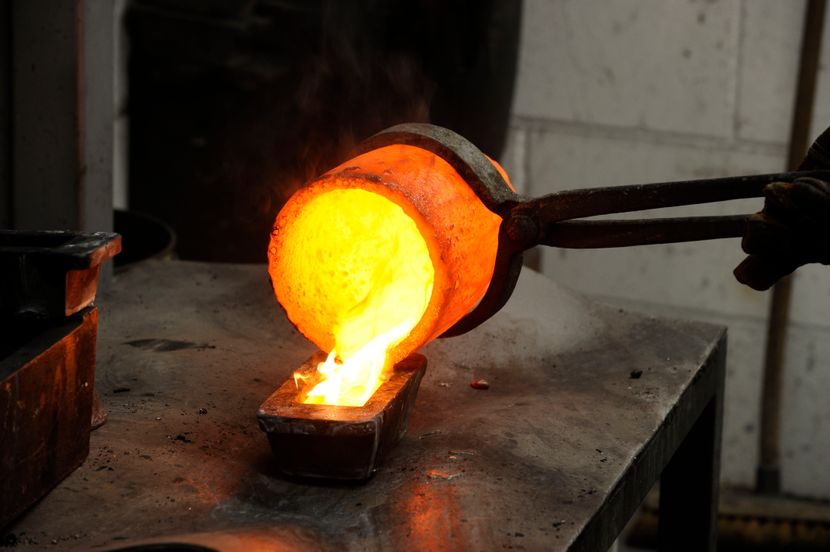Premium Melt & Assay Service at Sheffield Assay Office
Published: 16th July 2020

Do you have any precious metals that you would like to sell?
Whether you have old jewellery, dental scrap, sweeps from the jewellery manufacturing process or other precious metal containing alloys such as catalytic converters, we can melt these items down to produce a solid bar of metal along with a test certificate detailing its precious metal content.
The Sheffield Assay Office has a proven track record for its melt and assay services, combining years of experience and UKAS accredited test methods to give reports you can trust.
Our Analytical Services department melts and assays between 25-50kg of scrap metal weekly. The chemistry of the melts varies significantly from pure platinum, gold and/or silver to dental and jewellery scraps in addition to ferrous and steel sub-products.
Using our skill and experience, we use the optimal conditions to produce a bar which can later be sold. Approximately 50% of precious scrap we process is dental scrap and mixed metal materials. The melt process of these scraps is challenging due to differences in melting points and densities of the different metals contained in these materials.
Melting precious metals requires achieving the melting temperatures of all elements present to produce a homogenous liquid phase, which will solidify after being left to cool in a mould. Precious metals has different melting temperatures; these are 1,064ºC, 962ºC, 1,555ºC and 1,768ºC for gold, silver, palladium and platinum respectively. Therefore, if there is a mixture of precious metals containing platinum, the furnace must be able to reach at least 1,768ºC.
Furthermore, the use of fluxes and/or additives is a well-known practice during melting metals in order to facilitate separation of unwanted, non-metallic components, and therefore improve the homogeneity of final melt. Fluxes encourage the formation of a slag, which contains original flux (e.g. borax Na2B4O7) and non-metallic material, and release precious metal to the molten metal phase. Slag rises to the surface and may be skimmed off while metallic phases remain on the bottom of the crucible.
In addition, copper metallic or its oxides are used as a collector of precious metals from material containing ceramics and/or porcelains.
The use of an appropriate furnace, fluxes and additives and the knowledge of an experienced melter play an important role in producing a homogenous final bar. This will then be stamped to identify the bar and associate it with the final report.
Our laboratory test methods include fire assay, potentiometric titration and ICP-OES analysis. The most appropriate methods will be used to issue a test report which you can use to trade your precious metal bar.
Although using the most optimal melting procedures, there are some instances when is not possible to produce a fully homogenous bar due to separation of metals during the solidification (cooling process). In these instances, the bar assay must show the bar heterogeneity clearly, which will be taken into account during the trading agreement.
If you would like any further information, please contact our Analytical Services department.
The Sheffield Assay Office was established in 1773, under an Act of Parliament and today the company assays and hallmarks the precious metals - silver, gold, platinum and palladium. Sheffield Assay Office is one of only four UK assay offices who all work to uphold the Hallmarking Act of 1973 and continue to ensure consumer protection for customers purchasing precious metals.
To find out more about the whole range of services offered by Sheffield Assay Office, such as our hallmarking and analytical services, please email us at info@assayoffice.co.uk or complete the contact form on our website at http://www.assayoffice.co.uk/contact-us ,
Sign up here to all the latest news from Sheffield Assay Office direct to your inbox